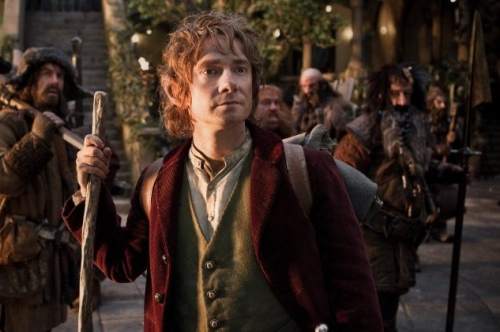Peter Jackson’s decision to shoot The Hobbit at 48 frames a second is drawing a lot of fire from journalists and geeks alike.
However, the final verdict still isn’t in yet because we’re months away from The Hobbit hitting theaters. Warner Brothers is also treading fairly cautiously, because 48FPS is a new way of looking at movies, and it could take audiences a while to get used to the new format.

Now as The Hollywood Reporter and Entertainment Weekly both note, several sci-fi / fantasy veterans have come forward to defend 48 frames a second, namely FX pioneer Douglas Trumbull, and James Cameron’s long time producer Jon Landau.
Both spoke at the SIGGRAPH computer graphics conference in L.A. on August 8. Technology should of course always be the way of telling the story, not the end all and be all of the film. (Think the icing on the cake, not the cake itself). Meaning, when you’re watching the movie, you should forget how many frames are flying by, or that it’s in 3D, despite the obvious fact you’re wearing big glasses.
As Landau said, the frame rate should dissolve “into the narrative story that we are trying to tell. We have a responsibility to find what tells a story in a better way and drive people out of their homes and into the cinema. [With high frame rates], they will walk away having been more engaged in our movies.”
(According to this report, even with the success of films like The Avengers and The Dark Knight Rises, movie attendance is at a reported 16 year low).
And indeed, Avatar’s sequels will be in an even faster frame rate and in 3D. Coming to the defense of 48 frames a second, Douglas Trumbull, who created the groundbreaking effects for 2001, Silent Running and Close Encounters, also told the Reporter that Peter Jackson working at 48 frames a second “is very brave and very important,” a “bold step” that’s gonna come out a winner.”
Still, this report also mentioned shooting at a faster rate can cause problems for post-production, and as Dennis Muren of ILM said, “We can start thinking about ways to do this more economically and faster.”
And one last quote in this report that really stands out to me is one DreamWorks exec who said, “I do think this is the future, but we have to be careful movies don’t look like television, otherwise we have lost our audience.”
High stakes for sure, but with so much money at risk for movies these days, it’s a chancy roll of the dice, without a doubt. If the 48 frames per second showing of the Hobbit pays off with audiences, it should indeed be the way of the future, and even if it doesn’t stick, we’ll still see it years down the road with the next Avatar flick, which should be in theaters around 2015.






